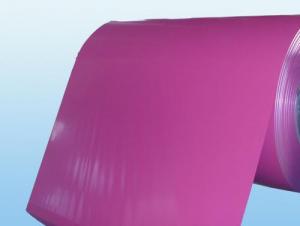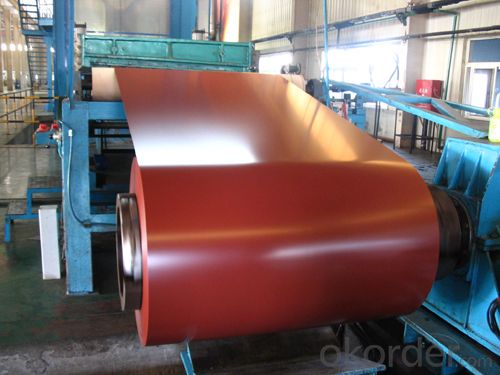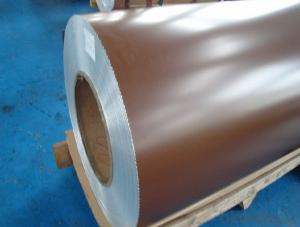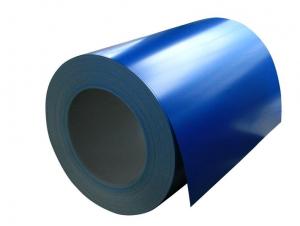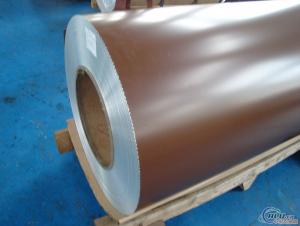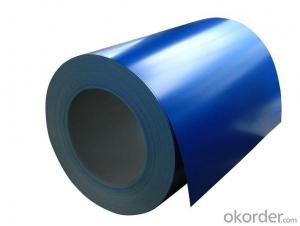Air Conditioner Aluminum Coil - Color Coated Aluminium Coil PE Painting AA3003 H14
- Loading Port:
- China Main Port
- Payment Terms:
- TT or LC
- Min Order Qty:
- -
- Supply Capability:
- -
OKorder Service Pledge
OKorder Financial Service
You Might Also Like
1.Structure of Product Description
Color Coated Aluminium Coil is widly used in decoration field. We can supply two kinds of paiting: PE and PVDF. For painting brand, we have China brand, PPGI and Becker.It depends our customers' requirement. PVDF coated aluminium coils are mainly used in the open air. It can last about 15-20 years. PE coated aluminium coils are used in the rooms, it can last 10 years.Now our Color coated aluminium coils are mainly exported to Asia, South America, Europe and so on.
2. Main features of the product
a.Exact Color--We have special color team to adjust the colors for our customers. You can provide our color sample or we can do color sample according to RAL Color System.
b.High quality-Our color coated aluminium coils are exported to Europe and pass European Standard Inspection.
c.Fast delivery time-The usual delivery time can be within 30 days.
3. Image

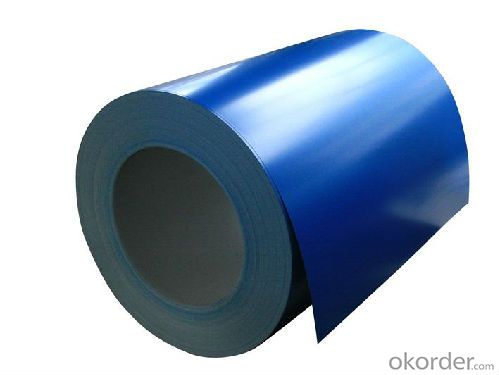
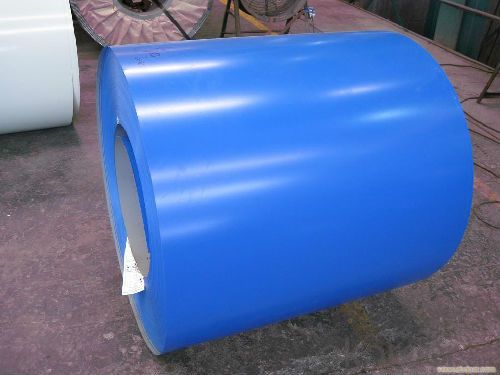
4. Product Specification
| Alloy | Temper | Color | Painting | Coating Thickness |
| AA3003 | H14 | RAL | PE&PVDF | 22-25micron |
5.FAQ
What is the quality standard?
---Usually our standard is GB3880-2006
What is the largest width?
---It is 2300mm
What is the MOQ?
---Usually we can accept 5 tons.
- Q: I don't have a rounded baking tray at the moment and would like to replace it with aluminium foil, do you think it's suitable and that it can withheld the intensity?
- Should be fine
- Q: Are aluminum coils suitable for chemical processing applications?
- Yes, aluminum coils are suitable for chemical processing applications. Aluminum is known for its excellent corrosion resistance, making it ideal for use in environments where chemicals are present. It is resistant to many acids, alkalis, and solvents, ensuring the durability and longevity of the coils. Additionally, aluminum coils offer excellent heat conductivity, allowing for efficient heat transfer during chemical processing. Their lightweight nature also makes them easy to handle and install. Overall, aluminum coils are a reliable choice for chemical processing applications due to their corrosion resistance, heat conductivity, and durability.
- Q: what is aircraft grade aluminum?
- Aluminum is never used in it's pure form. It is always used as an alloy - in combination with other metals and substances. The phrase aircraft grade aluminum is a bit misleading because there are a large number of different grades of aluminum used on aircraft - some of them aren't very special at all, but some of the grades are highly specialized, down to the micro-structure of the metal. Different grades of aluminum contain different quantities of other substances may have been forged or wrought in different types of processes. Typically high performance military aircraft will utilize very grade materials. The common characteristics of high grade aluminum alloys are it's ability to withstand heat and fracturing they are also extremely light. When people advertise products like keys made from aircraft grade aluminum it makes me laugh - because it's most likely to be the same grade aluminum they use to make tray stands, certainly not the same grade they use for structural components! Hope this helps!
- Q: How do aluminum coils contribute to the sound insulation of buildings?
- Aluminum coils contribute to the sound insulation of buildings by acting as a barrier or shield against sound transmission. The coils are often used in the construction of windows, doors, and other building components to dampen or block noise from entering or exiting a space. Their properties, such as their density and ability to reflect or absorb sound waves, help reduce the level of noise that can pass through the building envelope, resulting in improved sound insulation.
- Q: Is it possible to utilize aluminum coils for crafting artistic installations or distinctive creations?
- <p>Yes, aluminum coils can be used to create art installations and other unique creations. Their malleability, durability, and lightweight nature make them ideal for sculptural works. Artists can bend, shape, and weld aluminum coils into various forms, offering a wide range of design possibilities. The material's reflective surface can also add visual interest, especially when used in installations that interact with light and shadow. Additionally, aluminum's resistance to corrosion makes it suitable for outdoor art pieces, ensuring longevity and low maintenance.</p>
- Q: Aluminum roll width 750mm, single layer thickness 6.5mm, diameter 400mm., how to calculate the weight of the aluminum roll?
- You can use the outside diameter, the inner diameter and the width to get the volume. You know the density and volume, and then you can find the weight naturally
- Q: What is the typical yield strength-to-density ratio for aluminum coils?
- The typical yield strength-to-density ratio for aluminum coils can vary depending on the specific grade of aluminum being used. However, in general, aluminum has a relatively high strength-to-density ratio compared to many other metals. This means that it can provide good mechanical properties while still being lightweight. For example, the most commonly used grade of aluminum for coils, 3003 aluminum, typically has a yield strength-to-density ratio of around 0.53 MPa•m^3/kg. This means that for every unit of density (mass per unit volume), the material can withstand approximately 0.53 megapascals (MPa) of stress before it starts to deform permanently. Other high-strength aluminum alloys, such as 5052 or 6061, can have even higher yield strength-to-density ratios, reaching up to 0.6 MPa•m^3/kg or more. These alloys are often used in applications where higher strength and durability are required, such as in aerospace or automotive industries. Overall, the yield strength-to-density ratio of aluminum coils is typically quite favorable, making aluminum a popular choice for a wide range of applications that require both strength and lightweight properties.
- Q: Can aluminum coils be used for food storage containers?
- Yes, aluminum coils can be used for food storage containers. Aluminum is a popular choice for food storage containers due to its many beneficial properties. It is lightweight, durable, and has excellent thermal conductivity, meaning it can evenly distribute heat for efficient cooking or cooling. Additionally, aluminum is non-toxic, odorless, and resistant to corrosion, making it a safe option for storing food. It also provides an effective barrier against light, moisture, and oxygen, which helps to preserve the freshness and quality of the stored food. Overall, aluminum coils can be a reliable and practical choice for food storage containers.
- Q: why is aluminum used for railway lines?thanks x
- If you look at the recent trend in the materials used for railway vehicles, you may find that the mainstream material is lightweight aluminum, which is environmentally-friendly not only for bullet trains, but also for express trains. For commuter trains, stainless steel and aluminum materials are typically used, taking advantage of the merits of both metals.
- Q: This question asks for the distinctions between aluminum coil and steel coil, focusing on their properties and uses.
- <p>Aluminum coil and steel coil differ in several aspects. Aluminum coil is lightweight, corrosion-resistant, and has good thermal conductivity, making it ideal for applications requiring flexibility and resistance to weathering. It's commonly used in construction, packaging, and electrical applications. Steel coil, on the other hand, is stronger and more durable, suitable for heavy-duty applications. It's often used in automotive, construction, and manufacturing due to its high strength and ability to withstand heavy loads. Steel is also magnetic, which is a property not shared by aluminum. The choice between aluminum and steel coil depends on the specific requirements of the project, such as weight, strength, and environmental resistance.</p>
Send your message to us
Air Conditioner Aluminum Coil - Color Coated Aluminium Coil PE Painting AA3003 H14
- Loading Port:
- China Main Port
- Payment Terms:
- TT or LC
- Min Order Qty:
- -
- Supply Capability:
- -
OKorder Service Pledge
OKorder Financial Service
Similar products
Hot products
Hot Searches
Related keywords
